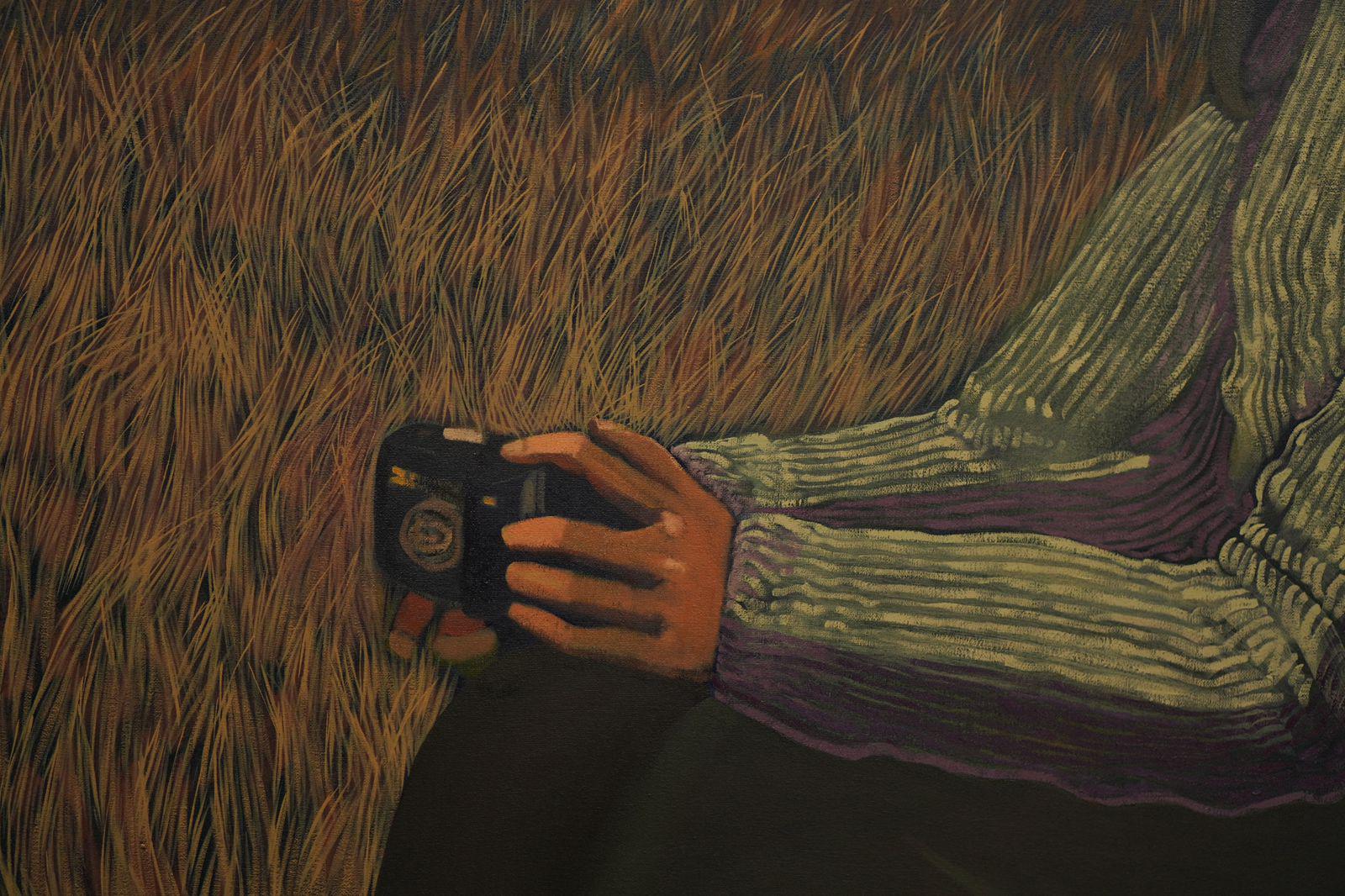Lorem ipsum dolor sit amet, consectetur adipiscing elit, sed do eiusmod tempor incididunt ut labore et dolore magna aliqua. Ut enim ad minim veniam, quis nostrud exercitation ullamco laboris nisi ut aliquip ex ea commodo consequat. Duis aute irure dolor in reprehenderit in voluptate velit esse cillum dolore eu fugiat nulla pariatur.
SALAVERNA
OR THE LOST PARADISE
Ángel Cammen
Bodega OMR, 2025
In 2016, a group of outsiders arrived in the town of Salaverna to warn its inhabitants of a dangerous geological fault beneath their feet. Using intimidation, they urged them to evacuate. In truth, mining operations by the Frisco-Tayahua company had already begun illegally below the surface. Today, Salaverna is a ghost town that refuses to die.
In this context, Salaverna —as a pictorial project— is the story of dispossession, but above all, it is the account of a place, and more precisely, of the images tied to the communal and personal identities associated with that place.
In this exhibition, Ángel Cammen looks at the place from a “positional consciousness” (Merleau-Ponty), one that is developed in relation to the hierarchies and values of others. Identity, as a dynamic, complex, and often conflicting construct, speaks to how we are seen, how we see ourselves, and how we wish to be seen. In that sense, these pieces continue a visual reflection on the body already present in Cammen’s earlier works. The series moves toward a reticulated structure filled with symbols linked to memory, experience, and human integration with nature — as opposed to representations of empty or neutral space. His main stylistic resources —self-portraiture and landscape— alternate and converse in an effort to re(build) and appropriate elements of communal tradition, reactivating them as an open and renewed personal identity.
Regarding self-portraiture, Cammen does not begin with a fully formed identity, nor does he seek to project temperament to persuade the viewer; these are not introspective portraits. Rather, he narrates personal experiences in which referring to himself is inescapable. His works do not aim to define, but to recount the vicissitudes of an identity in motion — one that is constantly becoming. Ángel belongs to a generation that no longer seeks permission to dissent, but that is also acutely aware of its own instability and precarity. This monad we call identity can only consolidate by flowing — by resisting the normalizing algorithm, the custom that never quite becomes morality, the capitalist extractivism that voraciously accumulates and destroys both mineral and human resources, and the external individualities that seek to assimilate us through structural violence, divisive stigma, or the imposition of silence.
This process is not only personal but relational. Cammen outlines his identity by locating it within a larger body: family, place, the mourning of loss, childhood, and the nostalgia for lost time. From the collective to the individual, and back again, his images move from specific anecdotes to the genealogy that transcends them; from the documentation of dispossession to the symbolic recovery of personal and communal memory; from a presence that invokes cherished figures and objects of a ghost town, to the intuition that recognizes itself in them as a specter resisting death.
In terms of landscape, this series might be called neo-costumbrista, if it weren’t for the fact that it doesn’t depict a custom or tradition stuck in the morality of a bygone era. Instead, it illustrates —in its own way— the possibility of different ways of being, which often challenge patriarchal legacies. Cammen’s paintings may evoke a déjà vu of traditional Mexican imagery, but they are neither typical nor picturesque: they are singular.
The visual fluidity with which Cammen renders the landscape —moving between his figure and a network of symbols— echoes the metaphysical and surreal tone of Julio Galán’s paintings such as Mar de Musquiz (1998), Mi reloj (1998), and El amor contigo nunca entró en mis planes (1991), in which the artist merges with the environment: character and setting become one. Ángel’s tone is less somber, yet equally intimate and mysterious. He does not hide within the landscape but unfolds alongside it, engaging with both elements without collapsing them into one. Unlike some of Galán’s works, which seem to anticipate the aerial omniscience of satellite imagery and the Internet, Cammen’s point of view remains horizontal — a gaze that moves from the canvas to the viewer’s eye, granting the painting a sense of closeness and returning to it the horizon and depth of perspective, even if sometimes bending its rules.
Following Julio Galán and Frida Kahlo, Cammen borrows from the imagery of popular and religious art, though to a lesser extent. As in saintly iconography, his characters — himself included— can be identified by the symbols that accompany them: an orange tree, maguey plants, prickly pears, a horse, two dogs "making life" (copulating), the phases of the moon rising from the vegetal to the celestial world, dance as a metaphor for a first romantic encounter, the grandmother’s hidden feet rooted in beloved soil like stubborn roots, or a young apple tree that survived abandonment and may soon bear fruit once transplanted elsewhere.
The mining corporation continues its attempts to open an open-pit mine. Salaverna remains an obstacle, but they have yet to destroy the will of its last remaining inhabitants. In the face of this, something endures — even if only the experience of having lived and the persistent possibility of beauty, which survives despite everything in a deteriorated landscape.
In Salaverna, territory and memory, documentary reality and artistic representation, are bound by desolation, preemptive death, and the mourning of forced exodus. Cammen’s paintings are rooted in place and, by doing so, add another layer of contemplation to the intersecting identities and conflicts at play. In the end, the lesson remains the same: there is no other paradise but the lost one.
–Baudelio Lara
Special thanks to Clarissa Navarro for her support in coordinating the project.
→
→




%20-%20original.jpg)
